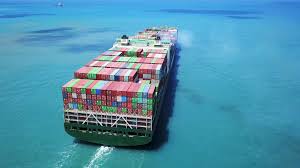3D Printing Manufacturers: Navigating Unique Insurance Challenges in International Shipping
The 3D printing industry represents a cutting-edge frontier of manufacturing, blending advanced technology with global logistics. As manufacturers expand their international footprint, they encounter a complex web of insurance challenges that traditional coverage models struggle to address. This comprehensive guide explores the intricate insurance landscape for 3D printing manufacturers engaged in international shipping.

Understanding the Unique Risk Landscape
3D printing manufacturers operate in a dynamic environment where technological innovation meets global commerce. Unlike traditional manufacturing, this sector faces multifaceted risks that demand sophisticated, nuanced insurance solutions.
Technological Complexity: Beyond Standard Manufacturing Risks
- Intellectual Property Vulnerability: Digital design files represent immense value and are susceptible to cyber theft during international transmission
- Precision Equipment Fragility: Highly calibrated 3D printing machinery can be damaged during international transportation
- Rapid Technological Obsolescence: Equipment and designs can become outdated within months, complicating replacement and business interruption coverage
International Shipping: A Minefield of Potential Risks
Shipping 3D printed components and equipment internationally introduces layers of complexity that traditional marine cargo insurance struggles to comprehensively cover:
Primary International Shipping Risks
- Physical Damage Risks
- Vibration-induced calibration loss in precision equipment
- Temperature and humidity fluctuations affecting sensitive materials
- Mechanical shock during multi-modal transportation
- Regulatory Compliance Challenges
- Varying international standards for technological exports
- Complex customs regulations for high-tech equipment
- Potential legal restrictions on certain 3D printing technologies
- Cyber and Intellectual Property Risks
- Digital design file interception
- Unauthorized design replication
- Cross-border data protection violations
Comprehensive Insurance Strategies
Effective insurance for 3D printing manufacturers requires a multi-layered, adaptive approach that addresses technological, logistical, and regulatory challenges.
Recommended Insurance Coverage Components
| Coverage Type | Key Protections | Recommended Limits |
|---|---|---|
| Marine Cargo Insurance | Physical damage, loss during transit, equipment breakdown | Full replacement value + 25% contingency |
| Cyber Insurance | Design file protection, data breach response, intellectual property theft | Minimum £500,000 coverage |
| Professional Indemnity | Design errors, technological failures, international liability | £1-5 million, depending on company size |
| Business Interruption | Revenue protection during equipment replacement, shipping delays | 12-24 months of projected revenue |
Risk Mitigation Strategies
Beyond insurance, 3D printing manufacturers should implement robust risk management protocols:
- Develop comprehensive digital security protocols
- Implement rigorous packaging and transportation standards
- Maintain detailed documentation of equipment specifications
- Conduct regular risk assessment audits
- Stay updated on international trade regulations
Emerging Trends: The Future of 3D Printing Insurance
The insurance landscape for 3D printing manufacturers is rapidly evolving. Insurers are developing more sophisticated, technology-specific products that recognize the unique risks of this innovative sector.
Technological Innovations in Insurance
- AI-driven risk assessment models
- Real-time equipment monitoring integrations
- Blockchain-verified intellectual property protection
- Dynamic, adaptable policy structures
Conclusion: Proactive Protection in a Dynamic Landscape
For 3D printing manufacturers, comprehensive insurance is not just a safety net—it's a strategic asset. By understanding the intricate risks of international shipping and technological innovation, companies can develop robust protection strategies that safeguard their most valuable assets.
Frequently Asked Questions
- How often should 3D printing manufacturers review their insurance coverage?
- Recommended annually, or immediately after significant technological upgrades or expansion into new international markets.
- Are standard marine cargo policies sufficient for 3D printing equipment?
- No. Specialized technology and precision equipment require tailored coverage beyond standard marine policies.
- How can small 3D printing manufacturers manage insurance costs?
- Focus on risk mitigation, maintain detailed documentation, and work with insurers specializing in high-tech manufacturing.


 0330 127 2333
0330 127 2333
